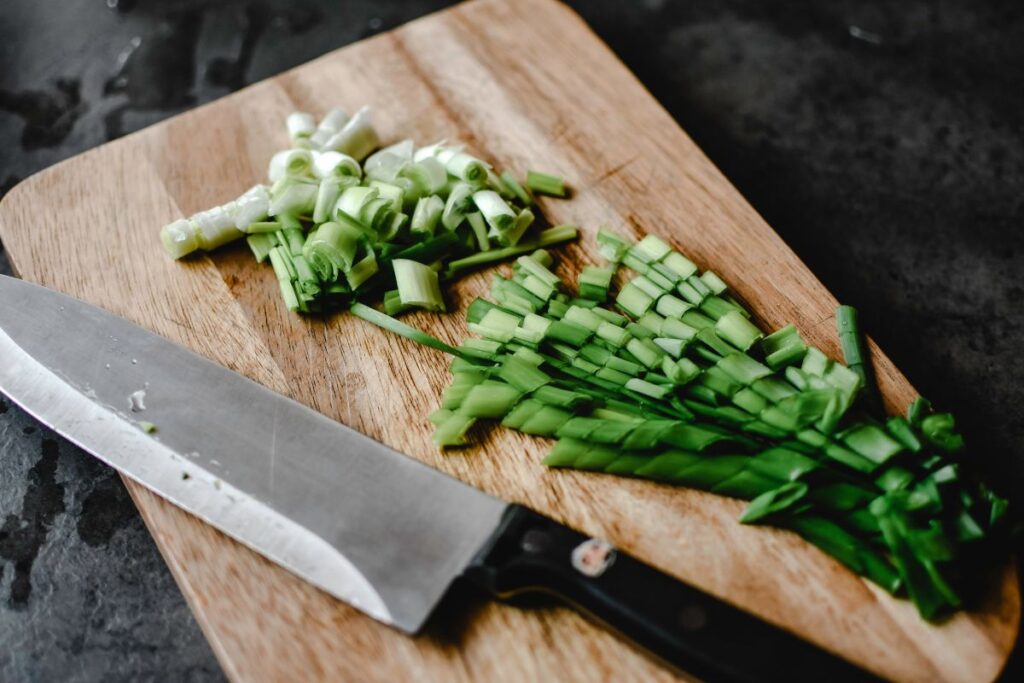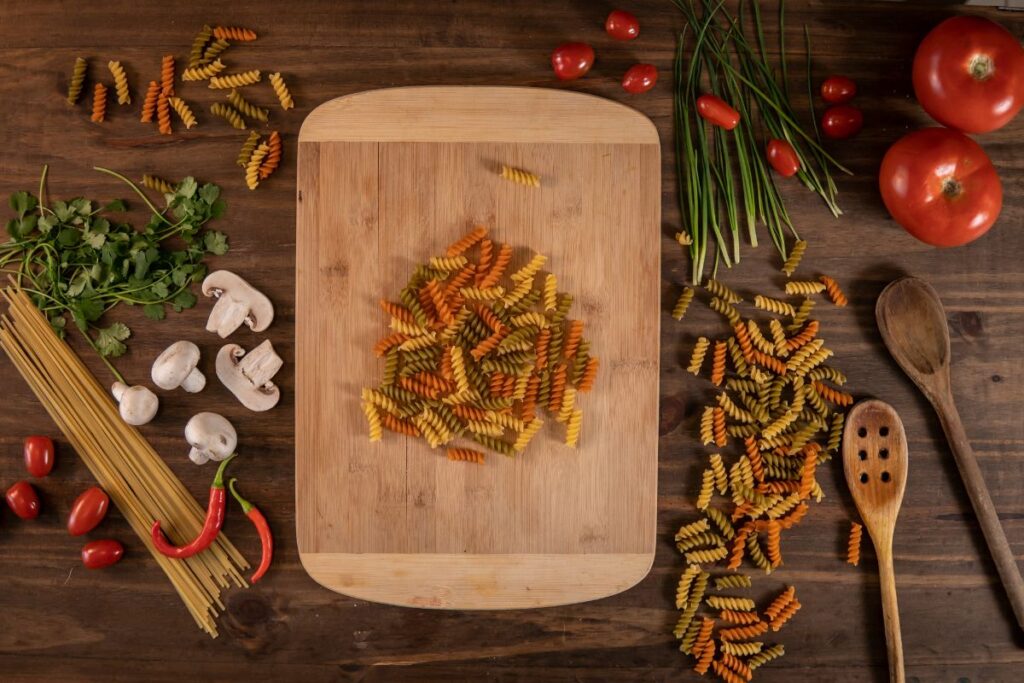Electronics
Grab deals on the latest gadgets and tech essentials!
Search
I’ve been a professional chef for over a decade, and if there’s one thing I’ve learned, it’s that a good wood chopping board is the unsung hero of any kitchen. Did you know that the global wooden cutting board market is expected to reach $798.9 million by 2026? That’s a lot of boards! But not all are created equal. Today, I’m excited to share my top 5 picks for 2024, each offering unique features to elevate your culinary experience. Whether you’re a seasoned pro or a home cook, there’s a perfect board waiting for you. Let’s slice into the details!
Wood possesses inherent antibacterial qualities that make it an excellent material for cutting boards. The porous structure of wood contains compounds that inhibit bacterial growth, providing a natural defense against harmful microorganisms. This characteristic sets wood apart from synthetic materials, offering a hygienic surface for food preparation.
Various wood species affect knife edges differently. Softer woods like maple and beech are gentler on blades, helping to maintain their sharpness over time. Harder woods, such as teak or bamboo, may dull knives more quickly but offer increased durability. The choice of wood type involves balancing knife care with board longevity.
Wood cutting boards represent a sustainable choice for environmentally conscious consumers. Many manufacturers source wood from responsibly managed forests, ensuring a renewable resource. Additionally, wood boards are biodegradable at the end of their lifecycle, unlike plastic alternatives that contribute to long-term environmental pollution.
The construction method significantly influences a board’s performance and durability:
Regular maintenance is crucial for preserving the quality and extending the lifespan of wood cutting boards. This includes:
Proper care not only ensures longevity but also maintains the board’s hygienic properties and aesthetic appeal.

This American-made board exemplifies quality craftsmanship. Its edge-grain construction offers a balance of durability and knife-friendliness. The reversible design doubles its functionality, making it suitable for both cutting and serving. While the $87 price point may seem steep, the board’s longevity and versatility justify the investment for serious home cooks.
Handcrafted excellence defines this premium board. The end-grain construction provides superior durability and self-healing properties. At $240, it represents a significant investment, but its customization options and long-lasting performance make it a favorite among professional chefs and cooking enthusiasts. The board’s heft ensures stability during use but may pose storage challenges in smaller kitchens.
Teak’s natural water resistance makes this board a standout choice for those seeking low-maintenance options. The built-in juice groove enhances its practicality for carving meats. Priced at around $100, it offers a good balance of quality and affordability. However, teak’s hardness may require more frequent knife sharpening compared to softer woods.
This budget-friendly option proves that quality doesn’t always come with a high price tag. At $17, it offers excellent value with features like a juice groove and non-slip corners. The bamboo construction provides durability and eco-friendliness. While it may require more frequent oiling than hardwood boards, its affordability makes it an attractive option for casual cooks or those outfitting their first kitchen.
Versatility is the key selling point of this set. Priced at $18, it provides three differently sized boards to tackle various kitchen tasks. The lightweight design facilitates easy handling and storage. While the thinner construction requires careful use to prevent warping, the set’s practicality and eco-friendly material make it an excellent choice for households needing multiple boards.
The John Boos edge-grain and The Boardsmith end-grain boards showcase different approaches to maple construction:
Maple’s natural properties make it an ideal material for cutting boards. Its medium hardness provides a good balance between durability and knife edge preservation. Both boards excel in this regard, with the end-grain construction of The Boardsmith offering a slight edge in knife-friendliness.
The Boardsmith stands out with its range of customization options:
These features allow users to tailor the board to their specific needs, potentially justifying the higher price point for those seeking a personalized tool.
Both boards provide value through their longevity and performance, with the choice depending on individual needs and budget constraints.
Proper maintenance is crucial for both boards:
Following these guidelines ensures the boards maintain their quality and hygiene over time.
Teak’s natural oils provide excellent water resistance, making it ideal for humid environments or frequent use with moist ingredients. This characteristic reduces the need for frequent oiling and helps prevent warping or cracking over time.
Bamboo’s rapid growth rate makes it a highly sustainable material. It reaches maturity in just 3-5 years, compared to decades for hardwoods. This quick regeneration cycle minimizes environmental impact and makes bamboo an eco-conscious choice for cutting boards.
Both the Farberware Bamboo Board ($17) and the Totally Bamboo Set ($18) demonstrate that affordable options can still offer quality and functionality. These products provide an accessible entry point for those new to wood cutting boards or operating on a tight budget.
Teak and bamboo boards offer versatility in different ways:
Both materials’ lightweight nature facilitates easy storage and handling, making them practical choices for everyday use.
Larger boards, like the John Boos and Teakhaus models, offer ample space for prepping multiple ingredients simultaneously. This efficiency is particularly valuable when preparing complex recipes or cooking for larger groups. The extra room also provides a safer cutting environment, reducing the risk of accidents caused by overcrowding.
The Totally Bamboo 3-Piece Set exemplifies the benefits of having multiple board sizes:
This variety allows for efficient task allocation and helps prevent cross-contamination between different food types.
Thicker boards, such as The Boardsmith model, offer enhanced stability during use, reducing the risk of slipping or wobbling. The added thickness also contributes to longevity by providing more material to withstand repeated use and occasional refinishing. However, thicker boards may present storage challenges in smaller kitchens.
When selecting a board, consider your available storage space:
Your available counter space should influence your board choice:
Selecting a board that fits comfortably within your workspace ensures efficient and enjoyable cooking experiences.
Juice grooves, featured on the Teakhaus and Farberware boards, serve a practical purpose by containing liquids from fruits, vegetables, or meats. This feature can be particularly valuable when carving juicy roasts or working with ripe tomatoes. While not essential for all tasks, juice grooves significantly enhance cleanliness and convenience during messy prep work.
The non-slip corners on the Farberware bamboo board provide crucial stability during use. This feature is especially beneficial when working with slippery ingredients or performing tasks that require extra force, such as deboning meats. The added safety can boost confidence in the kitchen, particularly for less experienced cooks.
Reversible boards, like the John Boos model, offer two usable surfaces, effectively doubling their functionality. This design allows for:
Handle cutouts, found on the Totally Bamboo set, serve multiple purposes:
This feature adds versatility to the boards, making them more than just cutting surfaces.
The customization options offered by The Boardsmith cater to specific user needs:
While these features add to the cost, they can significantly enhance the board’s functionality for users with particular requirements or preferences.

Cleaning methods vary slightly depending on the wood type:
For all types, avoid harsh chemicals or abrasive scrubbers that can damage the wood’s surface.
Regular oiling is crucial for maintaining wood boards:
This process helps prevent drying, cracking, and warping while maintaining the board’s protective properties.
Prevent damage by avoiding these common errors:
Look out for these indicators that your board may need replacement:
Make board maintenance a habit:
By integrating these practices into your kitchen routine, you’ll ensure your wood cutting board remains a reliable tool for years to come.
After slicing through the details of these top wood chopping boards, it’s clear that 2024 offers options for every chef and kitchen. From the premium maple of John Boos to the eco-friendly bamboo sets, there’s a board to match your cooking style and budget. Remember, a quality wood chopping board isn’t just a tool—it’s an investment in your culinary journey. So, which one caught your eye? Whether you’re drawn to the self-healing end-grain marvel or the budget-friendly bamboo trio, your perfect board is waiting to become the foundation of countless delicious meals. Happy chopping, and may your knives always stay sharp!